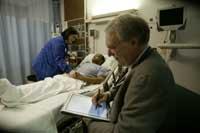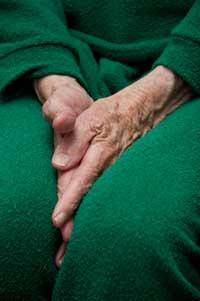Calligraphy to detect parkinson's disease

Parkinson's disease is a disease that affects the nervous system. It affects both movement control and coordination as well as parts of the brain responsible for maintaining muscle tone and position. It occurs when dopamine decreases in the brain. And dopamine is necessary to move quickly and coordinate. Therefore, the main manifestation of the disease is usually the scarce control of movements: tremor, muscle stiffness and slowness and difficulty to initiate movement are the clearest indicators.
The disease was first described in 1817 by London physicist James Parkinson. Since then it has been constantly investigated, but the foundations of the disease are still unclear. In addition, Parkinson's is generally detected when it is quite advanced; when symptoms appear in humans brain injuries are very serious and the disease has no return.
Obtaining an early diagnosis is therefore crucial for the prevention of the disease. And among the attempts being made on this path is the novel method recently launched.
Well, the company Hispafuentes de Ávila has developed a computer system in collaboration with other foreign entities. Through it, researchers claim that it is possible to detect a person who may have “great opportunities” to suffer from Parkinson’s disease “in an initial or prior phase.” The key? Observe your calligraphy.
Observation, how?

According to the researchers, the process starts as an electrocardiogram, but in this case it is only placed in the writing arm of the sensors to record muscle movements and neurological stimuli.
Information collected by sensors placed on the arm is transferred to a server via wifi. And the data of the digital pen and the PC Tablet that is used to write come to the same server
The method is to observe the person's muscle and nervous behavior during writing. Through writing patterns that are considered “normal,” the person should write several calligraphy series several times. And then the results are compared to see possible variations. The data is deglated to be able to carry out a thorough verification.

Previously, in order to warn of unconventional graphics, a group of experts, including medical advisors, establishes a series of parameters. Once the exercises are done, the software is the one that analyzes the repeated texts and seeks trends.
Together with Ávila, the project was attended by researchers from the UK, Germany, Finland and the Netherlands. The first applications are intended in September at a Finnish health centre. “This can be complemented by the activity of the doctor making the clinical diagnosis. We believe it has a great guarantee of success, because there are no similar instruments and there are many people touched by Parkinson’s,” they said.
Thus, according to available data, every 100,000 inhabitants appear 20 new cases of Parkinson's a year. Currently, about 800,000 people are affected in the European Union.
Published in 7K.
Buletina
Bidali zure helbide elektronikoa eta jaso asteroko buletina zure sarrera-ontzian











